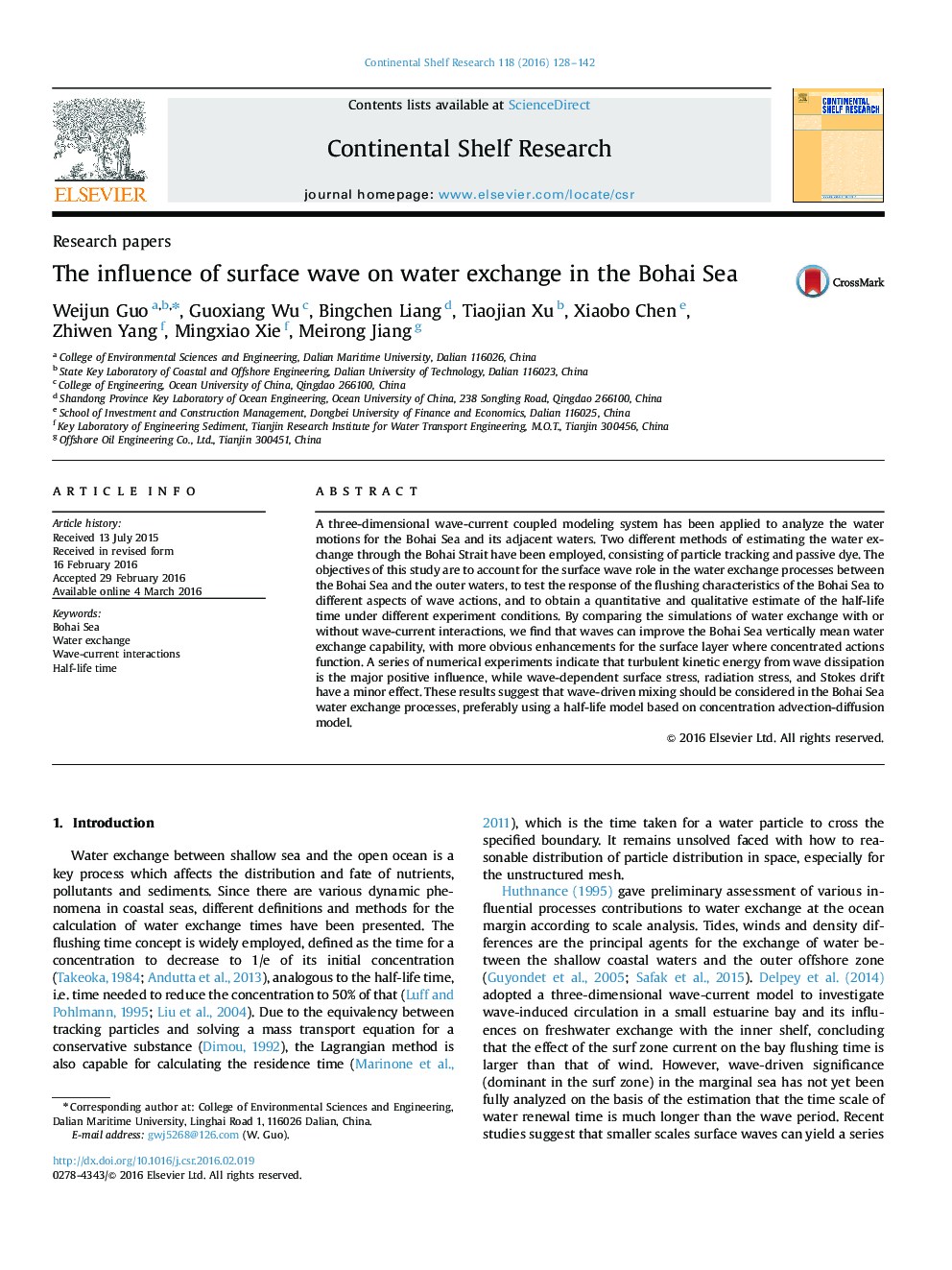| Article ID | Journal | Published Year | Pages | File Type |
|---|---|---|---|---|
| 4531597 | Continental Shelf Research | 2016 | 15 Pages |
•A Coupled model is used for analyzing the water exchange processes in the Bohai Sea.•The discrepancy between particle model and dye model confirms circulation structure.•Ocean waves can enhance water exchange rate, especially the surface layer.•Various aspects of waves on the water exchange are examined.
A three-dimensional wave-current coupled modeling system has been applied to analyze the water motions for the Bohai Sea and its adjacent waters. Two different methods of estimating the water exchange through the Bohai Strait have been employed, consisting of particle tracking and passive dye. The objectives of this study are to account for the surface wave role in the water exchange processes between the Bohai Sea and the outer waters, to test the response of the flushing characteristics of the Bohai Sea to different aspects of wave actions, and to obtain a quantitative and qualitative estimate of the half-life time under different experiment conditions. By comparing the simulations of water exchange with or without wave-current interactions, we find that waves can improve the Bohai Sea vertically mean water exchange capability, with more obvious enhancements for the surface layer where concentrated actions function. A series of numerical experiments indicate that turbulent kinetic energy from wave dissipation is the major positive influence, while wave-dependent surface stress, radiation stress, and Stokes drift have a minor effect. These results suggest that wave-driven mixing should be considered in the Bohai Sea water exchange processes, preferably using a half-life model based on concentration advection-diffusion model.
